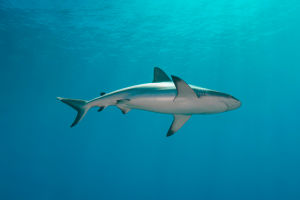Dolphins and whales have a lot in common. Both are intelligent, carnivorous aquatic mammals with streamlined bodies, blowholes, and fins.
But, are dolphins whales? And are whales dolphins? Let's dive into this fascinating question and explore the differences and similarities between these ocean giants.
What Are Whales?
Whales are warm-blooded mammals that live in the ocean, breathe air, and nurse their young—just like us. The scientific term for all whales, dolphins, and porpoises is Cetacea. There are around 90 species of whales, divided into two main groups:
Baleen whales (e.g., blue, fin, and grey whales) and toothed whales (e.g., beluga whales).
Baleen whales use keratin plates to filter tiny food like krill and plankton from the water.
Toothed whales, like hunt larger prey, including fish and squid.
What Are Dolphins?
Dolphins are marine mammals too, classified under Cetacea, just like whales and porpoises. Known for their playful nature and social behavior, dolphins live in oceans, rivers, and even lakes. There are around 40 dolphin species, including the famous bottlenose dolphin and the orca (killer whale).
Dolphins are highly intelligent and social, living in groups called pods. They hunt collaboratively, communicate through vocalizations, and share close bonds, much like humans.
So, Are Dolphins Whales?
Yes, all dolphins are technically whales! They belong to the group of toothed whales (Odontoceti). The largest dolphin, the orca, can grow up to 27 feet long. So, while dolphins are a type of whale, they’re generally smaller than other whale species.
And Are Whales Dolphins?
Not exactly. While dolphins are always considered whales, not all whales are dolphins. For example, narwhals aren’t classified as dolphins, though they’re still part of the whale family.
Key Similarities Between Dolphins and Whales
Mammalian Traits: Both are warm-blooded, breathe air, give birth to live young, and nurse their calves.
Appearance: Streamlined bodies, dorsal fins, tail flukes, and a thick layer of blubber help both species swim efficiently and stay insulated.
Communication: Both communicate through vocalizations. Dolphins use echolocation to find prey, while whales “sing” to communicate across vast distances.
Intelligence: Both whales and dolphins are incredibly intelligent, capable of problem-solving, social bonding, and showing emotions like joy and grief.
What’s the Difference Between Dolphins and Whales?
Size: Dolphins are smaller and more agile. The biggest dolphin, the orca, is about 27 feet long. In contrast, the blue whale—the largest animal to have ever existed—can grow up to 98 feet long!
Diet: Dolphins eat larger prey like fish and squid, while baleen whales filter tiny food from the water.
Blowholes: Baleen whales have two blowholes, while dolphins (and other toothed whales) have just one.
Social Behavior: Dolphins often travel in large pods, whereas whales tend to live alone or in smaller groups, though they may form larger groups during migration or breeding.
Protecting Our Ocean Friends
Unfortunately, both dolphins and whales are threatened by climate change, pollution, and human activities. From noise pollution to fishing nets, these magnificent creatures face many challenges. Species like the North Atlantic right whale and the vaquita are critically endangered.
IFAW is actively working to protect marine life through partnerships, marine conservation, and advocating for slower ship speeds to reduce ocean noise. We’re also working to stop commercial whaling, ensuring a safe and sustainable future for these ocean giants.
Hidden Facts What are the Differences Between Whales and Dolphins - Similarities and Comparison
Video by Thera Planet


